Javier Vazquez-Corral
GenColorBench: A Color Evaluation Benchmark for Text-to-Image Generation Models
Oct 23, 2025Abstract:Recent years have seen impressive advances in text-to-image generation, with image generative or unified models producing high-quality images from text. Yet these models still struggle with fine-grained color controllability, often failing to accurately match colors specified in text prompts. While existing benchmarks evaluate compositional reasoning and prompt adherence, none systematically assess color precision. Color is fundamental to human visual perception and communication, critical for applications from art to design workflows requiring brand consistency. However, current benchmarks either neglect color or rely on coarse assessments, missing key capabilities such as interpreting RGB values or aligning with human expectations. To this end, we propose GenColorBench, the first comprehensive benchmark for text-to-image color generation, grounded in color systems like ISCC-NBS and CSS3/X11, including numerical colors which are absent elsewhere. With 44K color-focused prompts covering 400+ colors, it reveals models' true capabilities via perceptual and automated assessments. Evaluations of popular text-to-image models using GenColorBench show performance variations, highlighting which color conventions models understand best and identifying failure modes. Our GenColorBench assessments will guide improvements in precise color generation. The benchmark will be made public upon acceptance.
Color Names in Vision-Language Models
Sep 26, 2025Abstract:Color serves as a fundamental dimension of human visual perception and a primary means of communicating about objects and scenes. As vision-language models (VLMs) become increasingly prevalent, understanding whether they name colors like humans is crucial for effective human-AI interaction. We present the first systematic evaluation of color naming capabilities across VLMs, replicating classic color naming methodologies using 957 color samples across five representative models. Our results show that while VLMs achieve high accuracy on prototypical colors from classical studies, performance drops significantly on expanded, non-prototypical color sets. We identify 21 common color terms that consistently emerge across all models, revealing two distinct approaches: constrained models using predominantly basic terms versus expansive models employing systematic lightness modifiers. Cross-linguistic analysis across nine languages demonstrates severe training imbalances favoring English and Chinese, with hue serving as the primary driver of color naming decisions. Finally, ablation studies reveal that language model architecture significantly influences color naming independent of visual processing capabilities.
LLM-Driven Medical Document Analysis: Enhancing Trustworthy Pathology and Differential Diagnosis
Jun 24, 2025Abstract:Medical document analysis plays a crucial role in extracting essential clinical insights from unstructured healthcare records, supporting critical tasks such as differential diagnosis. Determining the most probable condition among overlapping symptoms requires precise evaluation and deep medical expertise. While recent advancements in large language models (LLMs) have significantly enhanced performance in medical document analysis, privacy concerns related to sensitive patient data limit the use of online LLMs services in clinical settings. To address these challenges, we propose a trustworthy medical document analysis platform that fine-tunes a LLaMA-v3 using low-rank adaptation, specifically optimized for differential diagnosis tasks. Our approach utilizes DDXPlus, the largest benchmark dataset for differential diagnosis, and demonstrates superior performance in pathology prediction and variable-length differential diagnosis compared to existing methods. The developed web-based platform allows users to submit their own unstructured medical documents and receive accurate, explainable diagnostic results. By incorporating advanced explainability techniques, the system ensures transparent and reliable predictions, fostering user trust and confidence. Extensive evaluations confirm that the proposed method surpasses current state-of-the-art models in predictive accuracy while offering practical utility in clinical settings. This work addresses the urgent need for reliable, explainable, and privacy-preserving artificial intelligence solutions, representing a significant advancement in intelligent medical document analysis for real-world healthcare applications. The code can be found at \href{https://github.com/leitro/Differential-Diagnosis-LoRA}{https://github.com/leitro/Differential-Diagnosis-LoRA}.
xLSTM-ECG: Multi-label ECG Classification via Feature Fusion with xLSTM
Apr 14, 2025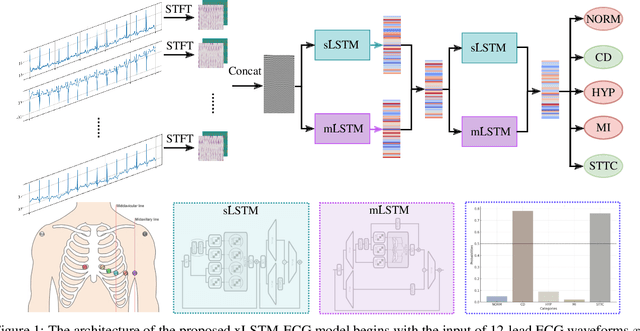

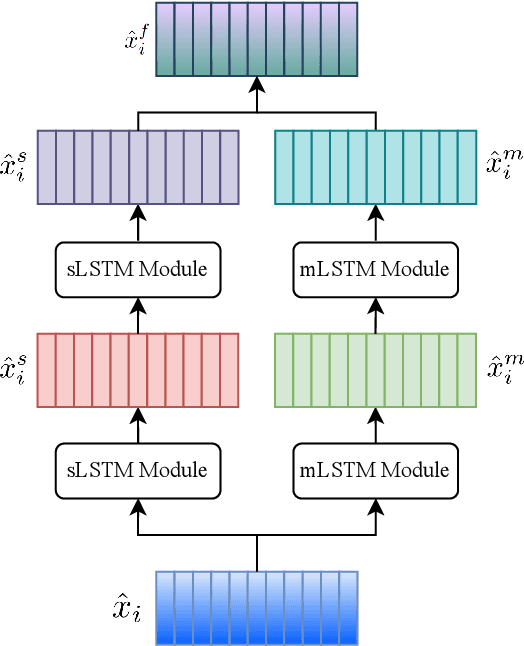
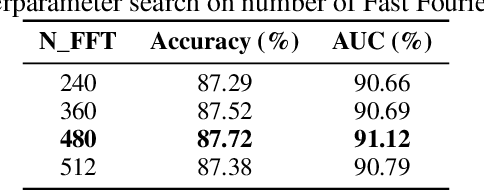
Abstract:Cardiovascular diseases (CVDs) remain the leading cause of mortality worldwide, highlighting the critical need for efficient and accurate diagnostic tools. Electrocardiograms (ECGs) are indispensable in diagnosing various heart conditions; however, their manual interpretation is time-consuming and error-prone. In this paper, we propose xLSTM-ECG, a novel approach that leverages an extended Long Short-Term Memory (xLSTM) network for multi-label classification of ECG signals, using the PTB-XL dataset. To the best of our knowledge, this work represents the first design and application of xLSTM modules specifically adapted for multi-label ECG classification. Our method employs a Short-Time Fourier Transform (STFT) to convert time-series ECG waveforms into the frequency domain, thereby enhancing feature extraction. The xLSTM architecture is specifically tailored to address the complexities of 12-lead ECG recordings by capturing both local and global signal features. Comprehensive experiments on the PTB-XL dataset reveal that our model achieves strong multi-label classification performance, while additional tests on the Georgia 12-Lead dataset underscore its robustness and efficiency. This approach significantly improves ECG classification accuracy, thereby advancing clinical diagnostics and patient care. The code will be publicly available upon acceptance.
HyperNVD: Accelerating Neural Video Decomposition via Hypernetworks
Mar 21, 2025



Abstract:Decomposing a video into a layer-based representation is crucial for easy video editing for the creative industries, as it enables independent editing of specific layers. Existing video-layer decomposition models rely on implicit neural representations (INRs) trained independently for each video, making the process time-consuming when applied to new videos. Noticing this limitation, we propose a meta-learning strategy to learn a generic video decomposition model to speed up the training on new videos. Our model is based on a hypernetwork architecture which, given a video-encoder embedding, generates the parameters for a compact INR-based neural video decomposition model. Our strategy mitigates the problem of single-video overfitting and, importantly, shortens the convergence of video decomposition on new, unseen videos. Our code is available at: https://hypernvd.github.io/
Revisiting Image Fusion for Multi-Illuminant White-Balance Correction
Mar 18, 2025Abstract:White balance (WB) correction in scenes with multiple illuminants remains a persistent challenge in computer vision. Recent methods explored fusion-based approaches, where a neural network linearly blends multiple sRGB versions of an input image, each processed with predefined WB presets. However, we demonstrate that these methods are suboptimal for common multi-illuminant scenarios. Additionally, existing fusion-based methods rely on sRGB WB datasets lacking dedicated multi-illuminant images, limiting both training and evaluation. To address these challenges, we introduce two key contributions. First, we propose an efficient transformer-based model that effectively captures spatial dependencies across sRGB WB presets, substantially improving upon linear fusion techniques. Second, we introduce a large-scale multi-illuminant dataset comprising over 16,000 sRGB images rendered with five different WB settings, along with WB-corrected images. Our method achieves up to 100\% improvement over existing techniques on our new multi-illuminant image fusion dataset.
Rethinking Image Evaluation in Super-Resolution
Mar 17, 2025Abstract:While recent advancing image super-resolution (SR) techniques are continually improving the perceptual quality of their outputs, they can usually fail in quantitative evaluations. This inconsistency leads to a growing distrust in existing image metrics for SR evaluations. Though image evaluation depends on both the metric and the reference ground truth (GT), researchers typically do not inspect the role of GTs, as they are generally accepted as `perfect' references. However, due to the data being collected in the early years and the ignorance of controlling other types of distortions, we point out that GTs in existing SR datasets can exhibit relatively poor quality, which leads to biased evaluations. Following this observation, in this paper, we are interested in the following questions: Are GT images in existing SR datasets 100\% trustworthy for model evaluations? How does GT quality affect this evaluation? And how to make fair evaluations if there exist imperfect GTs? To answer these questions, this paper presents two main contributions. First, by systematically analyzing seven state-of-the-art SR models across three real-world SR datasets, we show that SR performances can be consistently affected across models by low-quality GTs, and models can perform quite differently when GT quality is controlled. Second, we propose a novel perceptual quality metric, Relative Quality Index (RQI), that measures the relative quality discrepancy of image pairs, thus issuing the biased evaluations caused by unreliable GTs. Our proposed model achieves significantly better consistency with human opinions. We expect our work to provide insights for the SR community on how future datasets, models, and metrics should be developed.
Leveraging Semantic Attribute Binding for Free-Lunch Color Control in Diffusion Models
Mar 12, 2025

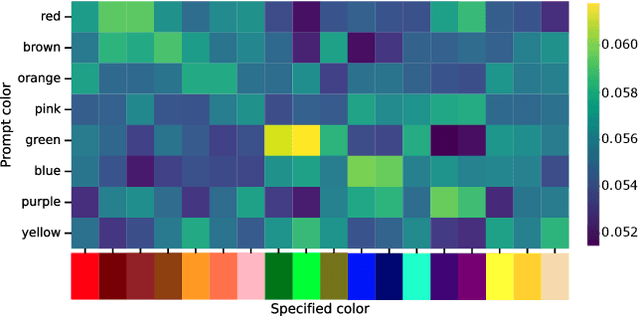

Abstract:Recent advances in text-to-image (T2I) diffusion models have enabled remarkable control over various attributes, yet precise color specification remains a fundamental challenge. Existing approaches, such as ColorPeel, rely on model personalization, requiring additional optimization and limiting flexibility in specifying arbitrary colors. In this work, we introduce ColorWave, a novel training-free approach that achieves exact RGB-level color control in diffusion models without fine-tuning. By systematically analyzing the cross-attention mechanisms within IP-Adapter, we uncover an implicit binding between textual color descriptors and reference image features. Leveraging this insight, our method rewires these bindings to enforce precise color attribution while preserving the generative capabilities of pretrained models. Our approach maintains generation quality and diversity, outperforming prior methods in accuracy and applicability across diverse object categories. Through extensive evaluations, we demonstrate that ColorWave establishes a new paradigm for structured, color-consistent diffusion-based image synthesis.
Bit-depth color recovery via off-the-shelf super-resolution models
Jan 09, 2025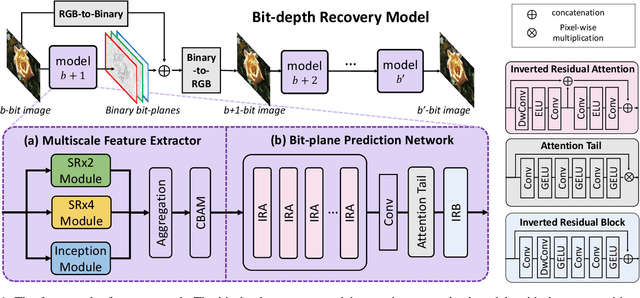
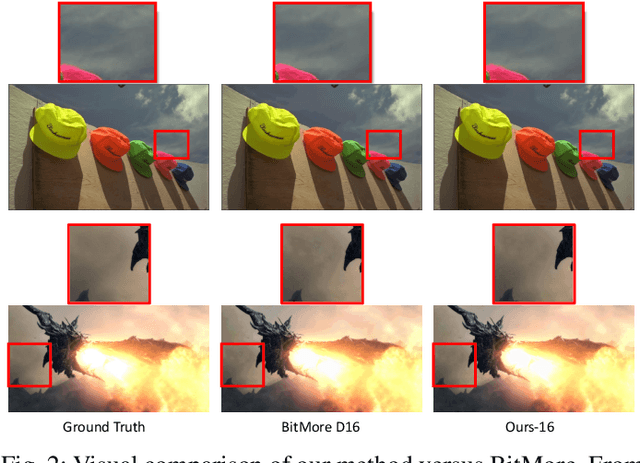


Abstract:Advancements in imaging technology have enabled hardware to support 10 to 16 bits per channel, facilitating precise manipulation in applications like image editing and video processing. While deep neural networks promise to recover high bit-depth representations, existing methods often rely on scale-invariant image information, limiting performance in certain scenarios. In this paper, we introduce a novel approach that integrates a super-resolution architecture to extract detailed a priori information from images. By leveraging interpolated data generated during the super-resolution process, our method achieves pixel-level recovery of fine-grained color details. Additionally, we demonstrate that spatial features learned through the super-resolution process significantly contribute to the recovery of detailed color depth information. Experiments on benchmark datasets demonstrate that our approach outperforms state-of-the-art methods, highlighting the potential of super-resolution for high-fidelity color restoration.
The Art of Deception: Color Visual Illusions and Diffusion Models
Dec 13, 2024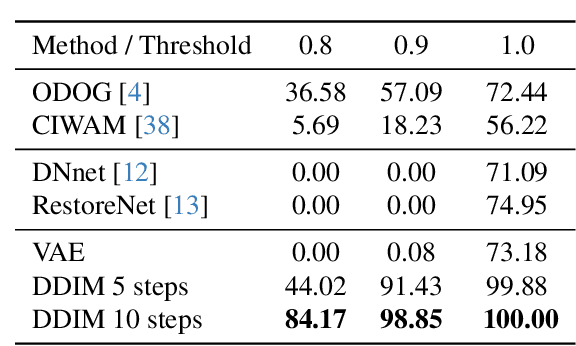
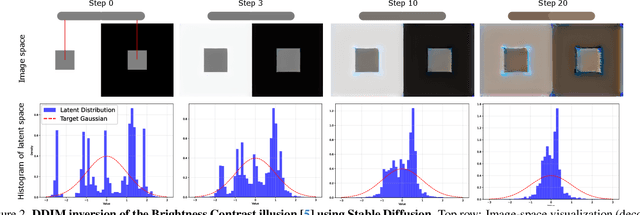
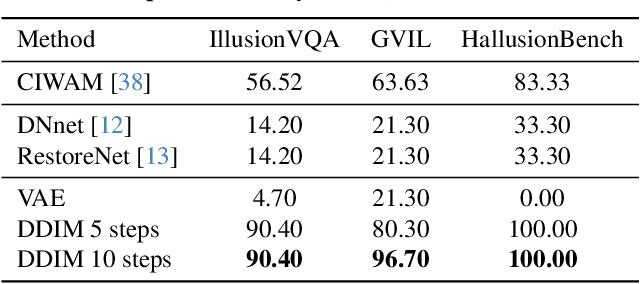
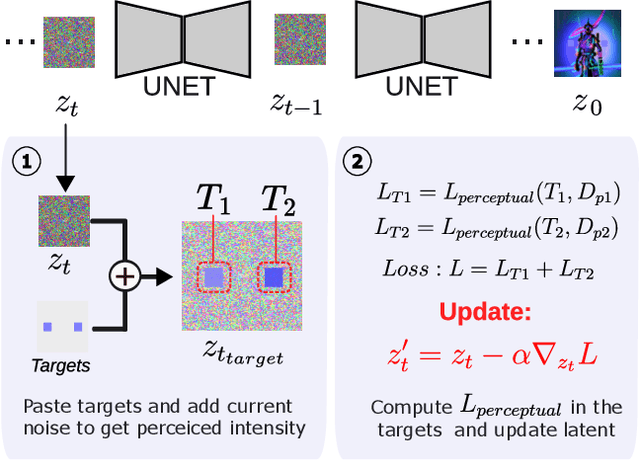
Abstract:Visual illusions in humans arise when interpreting out-of-distribution stimuli: if the observer is adapted to certain statistics, perception of outliers deviates from reality. Recent studies have shown that artificial neural networks (ANNs) can also be deceived by visual illusions. This revelation raises profound questions about the nature of visual information. Why are two independent systems, both human brains and ANNs, susceptible to the same illusions? Should any ANN be capable of perceiving visual illusions? Are these perceptions a feature or a flaw? In this work, we study how visual illusions are encoded in diffusion models. Remarkably, we show that they present human-like brightness/color shifts in their latent space. We use this fact to demonstrate that diffusion models can predict visual illusions. Furthermore, we also show how to generate new unseen visual illusions in realistic images using text-to-image diffusion models. We validate this ability through psychophysical experiments that show how our model-generated illusions also fool humans.
 Add to Chrome
Add to Chrome Add to Firefox
Add to Firefox Add to Edge
Add to Edge